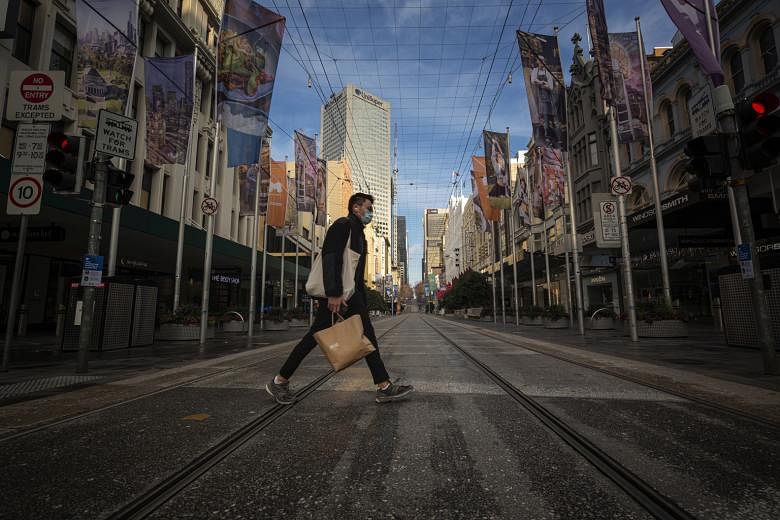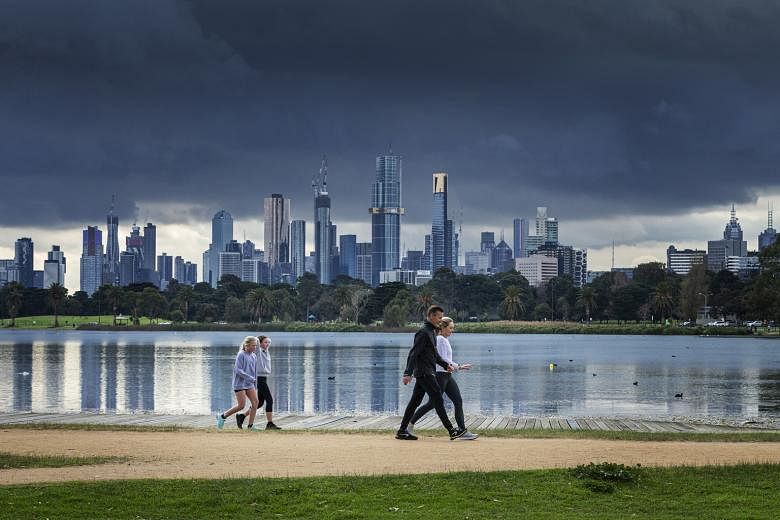Australia has been rolling back its shutdown after largely suppressing the Covid-19 outbreak, but the centres of some major cities still remain eerily quiet.
In central business districts, office blocks are far from their former bustling selves as large numbers of city workers continue to work from home.
Daily occupancy of city offices in Melbourne reportedly plunged to as low as 5 per cent late last month, according to a report in the Australian Financial Review.
Melbourne's office usage is likely to remain low after the Victoria state government reintroduced a shutdown for six weeks last Wednesday due to a fresh outbreak of Covid-19 cases.
In Sydney and Brisbane, where there has been little or no community transmission of the virus in recent weeks, occupancy was still only 20 per cent to 30 per cent last month, though it has since been climbing.
But analysts believe city centres are unlikely to return to their pre-pandemic activity levels, at least for the foreseeable future.
As Australia enters its first recession in almost 30 years, firms have started to reduce their office sizes to cut costs.
Some have cut staff numbers or are encouraging employees to work from home.
This change is affecting the commercial property market and will have broader effects across large Australian cities such as Sydney and Melbourne, where access to the central business district will no longer be as crucial as it once was.
A recent report by commercial real estate firm CBRE found that commercial rents in Sydney and Melbourne had fallen in the past three months and the amount of available sublease space has rapidly increased as companies have downsized.
In Sydney, available sublease space was at 101,623 sq m as of May 31, higher than the peak of about 90,000 sq m during the global financial crisis of 2007-08.
Mr Chris Fisher, CBRE's director of office leasing in Sydney, told The Straits Times that the firm was expecting a 20 per cent drop in effective rental prices in the city over the next two years. He said the main reason firms were reducing the size of their office space was "contraction or cost-cutting".
"At the moment, tenants are looking to cut costs due to the fact that we are in a recessionary environment," he said.
"A lot of businesses are currently assessing the business environment. They have successfully worked remotely for the past three months... and are looking at what it means going forward."
As of yesterday, Australia had recorded 9,797 Covid-19 cases and 108 deaths.
States and territories, aside from Victoria, have largely ended lockdowns but are still either encouraging or requiring employers to allow staff to work from home.
In New South Wales, the most populous state, the government's workplace policy for Covid-19 stipulates that "employers must allow employees to work from home where it is reasonably practical to do so".
All businesses can now open, but must have a limit of one person per 4 sq m. Restrictions on the number of people allowed on Sydney's buses and trains eased at the beginning of this month. Up to 68 people are now allowed on train carriages and 23 on buses, almost double the limits imposed in May.
Dexus, Australia's largest owner and manager of office space, said occupancy in its buildings currently range from 22 per cent to 54 per cent across various states.
Mr Kevin George, a senior executive at Dexus, told ST that workers have been gradually returning to offices as restrictions have eased, but the future of the post-pandemic workplace was difficult to predict.
"Numbers of people returning to their office workplaces will continue to increase as restrictions further ease," he said.
"It's too early to say what the impact of greater adoption of flexible working will be on office space over the longer term… The trend of flexible work arrangements has been accelerated by the pandemic and will be a feature of how most workplaces function moving forward."


